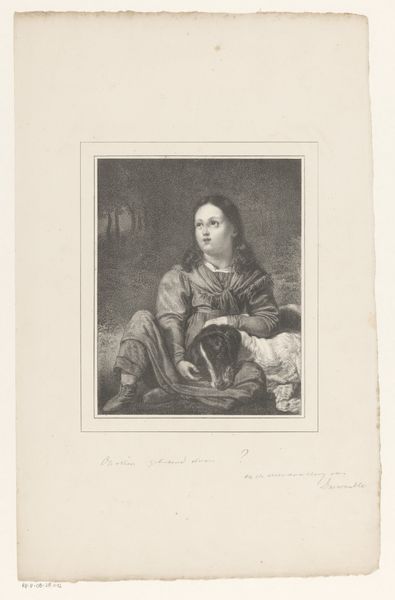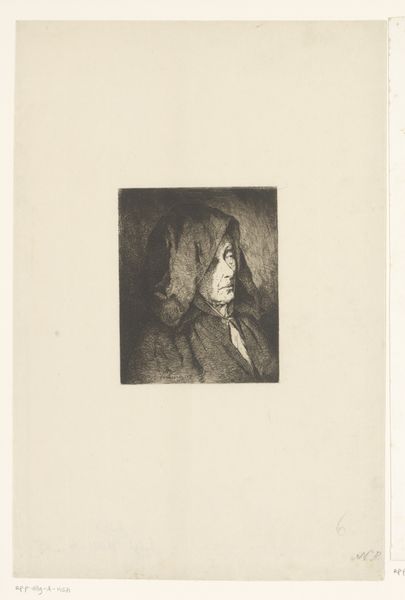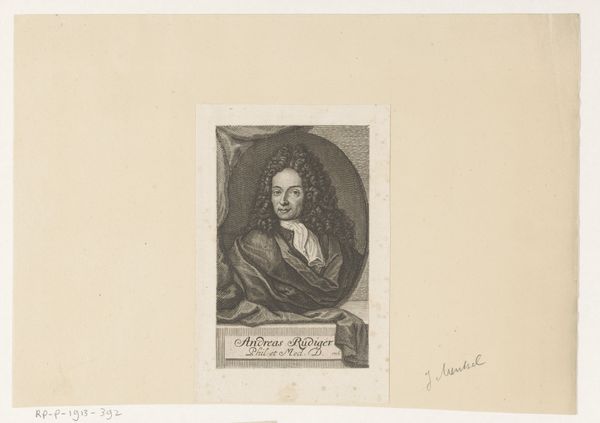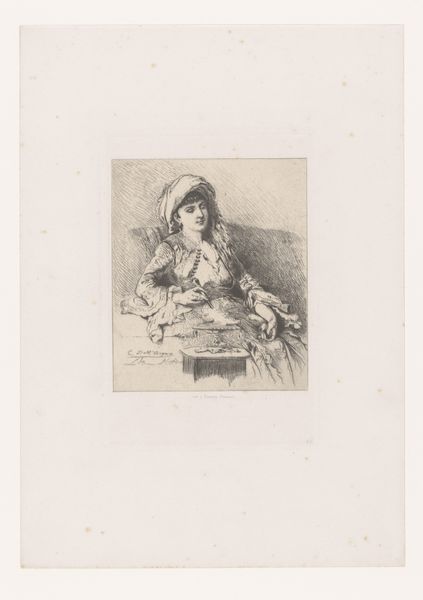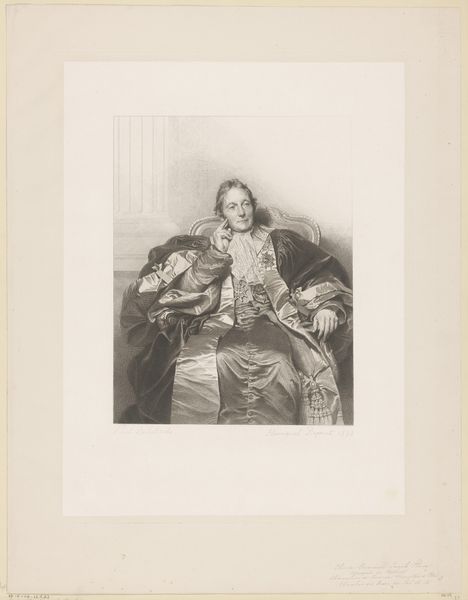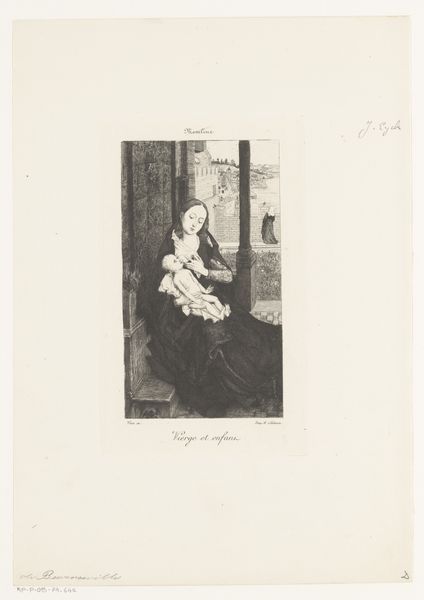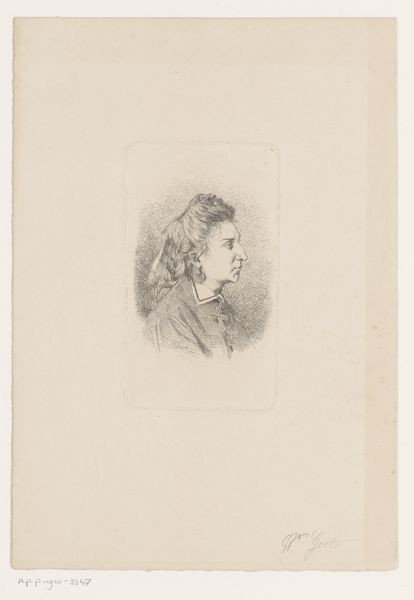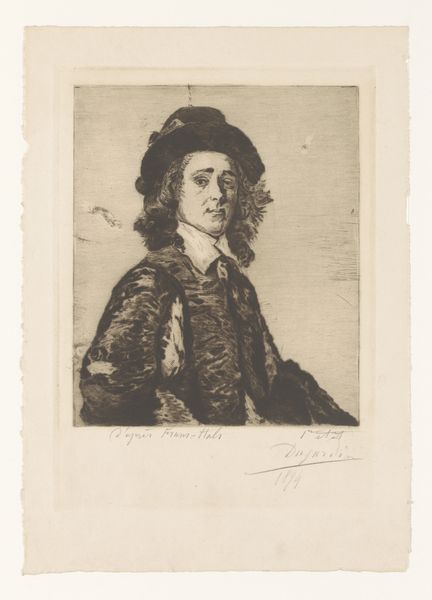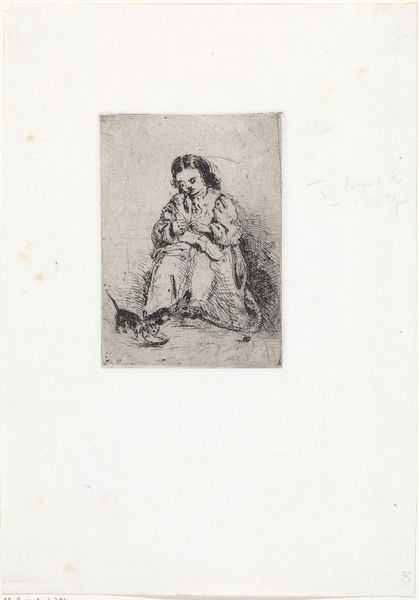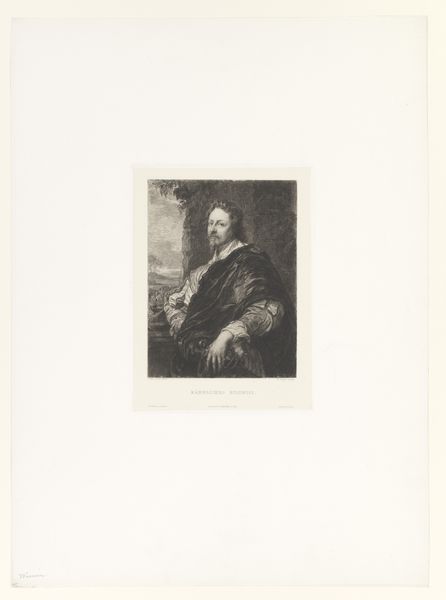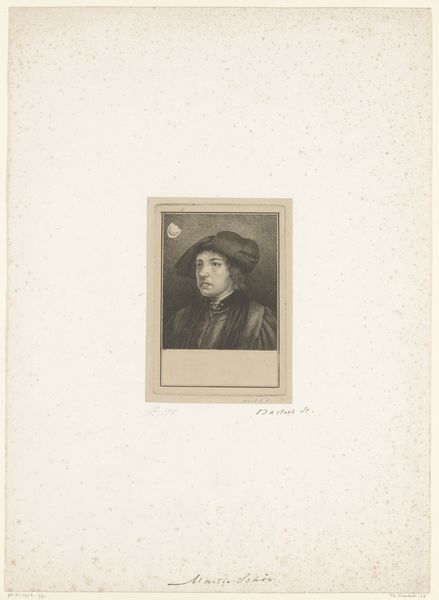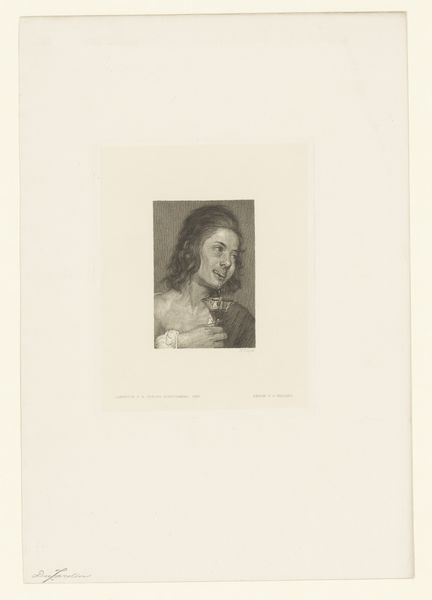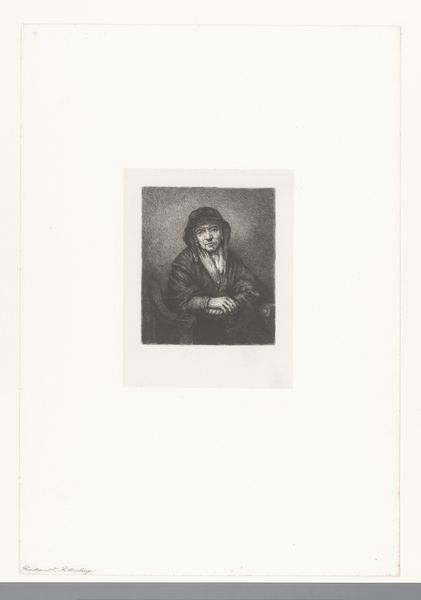
print, engraving
#
portrait
# print
#
old engraving style
#
history-painting
#
engraving
#
realism
Dimensions: height 239 mm, width 190 mm
Copyright: Rijks Museum: Open Domain
Curator: I find this print by Fritz Hanno so compelling. The engraving, titled “Portret van een onbekende man in historische kledij,” dates from around 1880 to 1905. It presents a dignified if somewhat melancholic portrait of an unknown man in historical dress. Editor: There's a certain somber stillness about it, isn’t there? The sitter’s gaze holds a depth that suggests quiet contemplation amidst, perhaps, societal unrest. His clothing looks heavy, doesn't it, restrictive. Curator: I agree. And the medium—engraving—plays a key role. The fine lines etched into the plate create subtle gradations of light and shadow, offering textural complexity to his rather lavish outfit and soft facial features. You can see it's realism. Editor: This engraving prompts me to consider representation and power structures of the time. Who was this man, really, and what stories remain untold? This historical recreation also implies a self-conscious grappling with tradition—a selective presentation of the past that suited prevailing ideologies, don't you think? Curator: Yes, the historical dress serves as a sort of declaration. We are given a narrative about history, crafted through both the labor of Hanno and the decisions of his subject. What's also interesting is how this was printed and potentially disseminated for consumption by the public. The material object offered, probably, access to a narrative of status to an emerging middle class. Editor: It reminds us that historical portraits aren't just neutral documents. They participate in larger dialogues about identity, memory, and the narratives we choose to valorize. Curator: Exactly! I think considering both the historical setting of this engraving and its material construction helps to see how intertwined they actually are. Editor: I will leave this piece with many new questions about class, privilege, and the production of images for different levels of society. Curator: Agreed! It certainly allows one to engage in critical reflection.
Comments
No comments
Be the first to comment and join the conversation on the ultimate creative platform.

